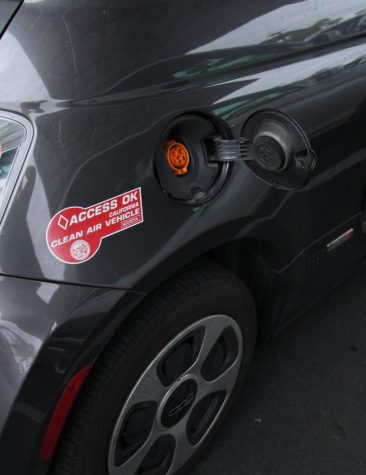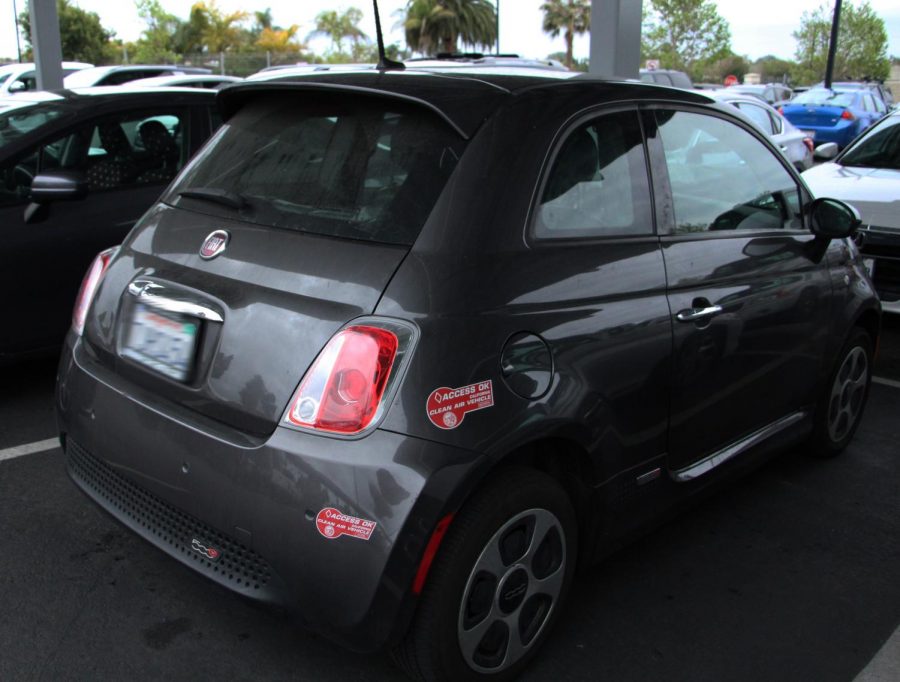Why we should drive electric cars
The Fiat500e is a fully electric, affordable, vehicle for those looking to have an electric car to drive locally.
April 27, 2021
“Human activities are responsible for almost all of the increase in greenhouse gases in the atmosphere over the last 150 years.” The total amount of “Greenhouse gas (GHG) emissions from transportation accounts for about 28 percent of total U.S. greenhouse gas emissions, making it the largest contributor of U.S. GHG emissions,” the EPA said.
As of 2021, there were 250 million vehicles on the road with less than 1 percent of those vehicles being electric. That is an absurd amount of greenhouse gases being emitted into our atmosphere on a daily basis.
As stated by the New York Times, “Even in 2050, when electric vehicles are projected to make up 60 percent of new sales, the majority of vehicles on the road would still run on gasoline. Slow fleet turnover is a major challenge for climate policy.”
Electric cars have zero tailpipe emissions, meaning cleaner air for all of us to breathe. As humans, it is our job to preserve the longevity of the planet and so far, we have not done a very good job. This means less contamination in the atmosphere affecting humans, animals, and all living creatures. When we drive electric, we are also reducing our carbon footprint, thus preserving our ozone layer. If every single person could drive an electric car, we could slow the global warming predicament significantly or at least jump-start the stop.
An argument that could be made against electric cars is that the production of them hurts the environment just as much as gas-powered cars.
“There is indeed a range of rare earth metals that make up the composition of the battery, and their extraction and manipulation can contribute to carbon emissions,” according to an article by Forbes.
Yet when we look at things in the big picture, EV’s are slowly lowering the number of emissions in the atmosphere. EV’s are not always going to be 100% environmentally friendly especially when they are manufactured, however, compared to gas automobiles, they are significantly superior in terms of reducing one’s carbon footprint

Another perk to driving electric cars is that they are extremely economical compared to gas-powered cars. With that being said, there are no oil changes, smog tests, or trips to the gas station when driving an EV. All in all these cars are exceedingly cost-effective and owners tend to go years without having to pay for restoration or maintenance bills.
A study by the Energy Sage found that the average cost of ownership for an EV in the United States was $485 per year, compared to$1,117 for the average gas-powered car.
Although the initial cost of an electric car may be more expensive than a gas vehicle, in the long run, the consumer would be reimbursed in fuel savings and repair costs over the entirety of the vehicle’s life.
Another concern about electric vehicles is the range. The average range for an EV is around 181 miles depending on the car you buy. Some cars have lower ranges like the Fiat 500E which only gets around 100 miles, however, that car is significantly cheaper than other electric cars. Electric cars like this one are extremely useful for staying local like driving around Carlsbad, Oceanside, or even heading down to San Diego and back in one charge. As time goes on, electric car manufacturers have made groundbreaking boosts in range performance due to advanced technology and new information.
“A popular recent introduction, the 2017 Chevrolet Bolt EV is the first mass-produced electric car anywhere near affordable with an all-electric range of more than 200 miles. Another up and comer, the VW e-Golf sports a 124 mile (201 km) range. Considering the average commute is around 12 miles (20 km), this gives drivers a lot of wiggle room,” FleetCarma said.
Due to the new technology, consumers can expect an affordable electric car with about 150 to 200 miles giving them leeway when commuting to work or driving locally. There are also many places where electric cars can be charged for free or for a small fee. In California alone, there are around 57,000 electric car chargers. If you wanted to save a great deal of money on gas for a road trip, planning around making stops to charge would ensure an affordable road trip.

“A typical electric car (60kWh battery) takes just under 8 hours to charge from empty to full with a 7kW charging point. Most drivers top-up charge rather than waiting for their battery to recharge from empty to full. For many electric cars, you can add up to 100 miles of range in ~35 minutes with a 50kW rapid charger,” PodPoint said.
Along with that, gas prices in 2021 alone have skyrocketed by about 75 cents this year. Due to this, many consumers have been struggling to pay for gas. Filling up a 12-gallon gas tank in California would put someone about $45 dollars out the door. That’s $45 that can’t go to electricity bills or water bills or a nice dinner with your family. As of March 2021, the average gas price in California is $3.781 on the report of the U.S. Energy Information Administration
“Vehicle emissions from burning gasoline and diesel fuels contain toxic pollutants including carbon monoxide, smog-causing volatile organic compounds and nitrogen oxides, sulfur dioxides, formaldehyde, and benzene,” Coltura.org said.















